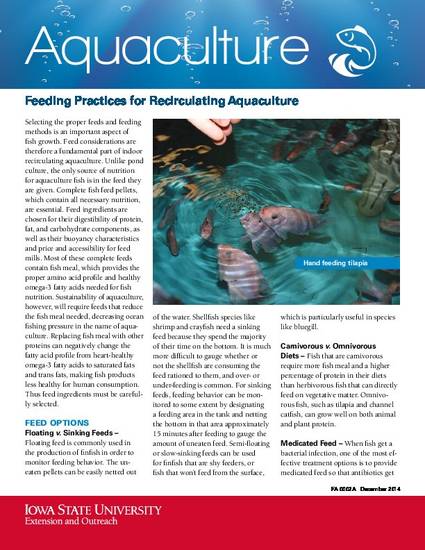
Selecting the proper feeds and feeding methods is an important aspect of fish growth. Feed considerations are therefore a fundamental part of indoor recirculating aquaculture. Unlike pond culture, the only source of nutrition for aquaculture fish is in the feed they are given. Complete fish feed pellets, which contain all necessary nutrition, are essential. Feed ingredients are chosen for their digestibility of protein, fat, and carbohydrate components, as well as their buoyancy characteristics and price and accessibility for feed mills. Most of these complete feeds contain fish meal, which provides the proper amino acid profile and healthy omega-3 fatty acids needed for fish nutrition. Sustainability of aquaculture, however, will require feeds that reduce the fish meal needed, decreasing ocean fishing pressure in the name of aquaculture. Replacing fish meal with other proteins can negatively change the fatty acid profile from heart-healthy omega-3 fatty acids to saturated fats and trans fats, making fish products less healthy for human consumption. Thus feed ingredients must be carefully selected.
- Environment,
- Aquaculture
Iowa State University Extension and Outreach publications in the Iowa State University Digital Repository are made available for historical purposes only. The information contained in these publications may be out of date. For current publications and information from Iowa State University Extension and Outreach, please visit
Available at: http://works.bepress.com/allen-pattillo/9/
